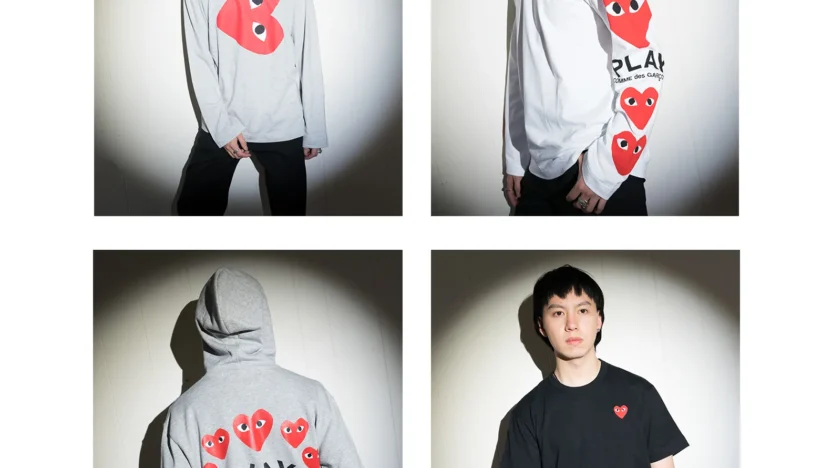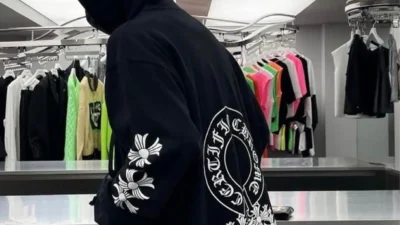In the realm of fashion, there are few names as enigmatic and revolutionary as Comme des Garçons. Founded by Rei Kawakubo in Tokyo in 1969, the brand has continuously defied the expectations of what clothing can be. To call CDG just a fashion label would be an understatement—it is a radical statement, a philosophy, and a continuous critique of the status quo in fashion.
Origins in Obscurity
The name Comme des Garçons—French for “like the boys”—already hints at Kawakubo’s intent to challenge gender norms and conventional beauty standards. She had no formal training in fashion; originally studying fine arts and literature, she came into the fashion world through styling and slowly began to make clothes out of necessity. Her label became official in 1973, and it didn’t take long before she disrupted the Tokyo fashion scene.
By the time CDG debuted in Paris in 1981, it was unlike anything the fashion capital had ever seen. The runway show, dominated by black, distressed fabrics, asymmetry, and seemingly “unfinished” looks, was described by critics as “Hiroshima chic.” The media was confused, if not hostile. Yet, that moment cemented CDG’s role as a force of rebellion.
Anti-Fashion as High Fashion
At the core of CDG is a rejection of traditional beauty. Rei Kawakubo doesn’t design clothes to flatter the body in a conventional sense. Instead, her pieces often distort or obscure the body altogether, creating new silhouettes and questioning what it means for clothing to be “beautiful” or “wearable.” Holes, tears, padding, lumps, exaggerated proportions—these are not flaws but features.
Kawakubo’s work aligns with what has come to be called “anti-fashion”—a term that ironically placed her at the forefront of high fashion. Unlike most designers who follow trends, she creates work independently of seasons and market pressures. In doing so, CDG has influenced generations of designers and has kept a cult-like following among those drawn to its avant-garde ethos.
Beyond the Runway
CDG isn’t just a brand; it’s an ecosystem. Over the decades, Kawakubo has launched several sub-labels under the CDG umbrella, including Comme des Garçons Homme Plus, Comme des Garçons Shirt, and Comme des Garçons Play—the last of which is perhaps the most widely recognized due to its iconic heart logo designed by Polish artist Filip Pagowski. The Play line, often seen on sneakers and T-shirts, brought CDG into the mainstream without compromising its core identity.
There’s also the influential Dover Street Market, a multi-brand retail concept launched by Kawakubo and her husband Adrian Joffe in 2004. With locations in London, Tokyo, New York, and other global hubs, DSM blends high fashion, streetwear, and art installations in a curated retail experience unlike any other.
Collaboration Culture
CDG has been a pioneer in the fashion collaboration game long before it became a marketing trend. Its partnerships with brands like Nike, Converse, Vans, Supreme, and Levi’s have consistently merged the avant-garde with the accessible. Whether it’s a pair of polka-dotted Chuck Taylors or an abstract fragrance, every collaboration carries the subversive spirit of CDG.
Even in perfumery, CDG stands apart. Its unisex scents—like the original Comme des Garçons Eau de Parfum or the Incense series—reject traditional perfume structures in favor of something more experimental and conceptual.
Rei Kawakubo: The Reluctant Icon
Rei Kawakubo rarely gives interviews and is famously media-shy. But her work speaks volumes. In 2017, she became only the second living designer to be honored with a solo exhibition at the Metropolitan Museum of Art’s Costume Institute—the first being Yves Saint Laurent. Titled Rei Kawakubo/Comme des Garçons: Art of the In-Between, the exhibit explored the tensions in her work: fashion/art, male/female, life/death.
Despite—or perhaps because of—her elusiveness, Kawakubo remains a figure of towering influence. She doesn’t just make clothes; she creates thought-provoking experiences that force us to question fashion’s role in culture, identity, and self-expression.
The Legacy of CDG
More than 50 years after its inception, Comme des Garçons remains radically relevant. In a world driven by fast fashion and mass appeal, CDG continues to challenge, provoke, and inspire. Whether you’re wearing a CDG Play tee or watching a Homme Plus show unfold like performance art, you’re engaging with a brand that refuses to be easy, digestible, or ordinary.
And in fashion, that’s the rarest thing of all.



